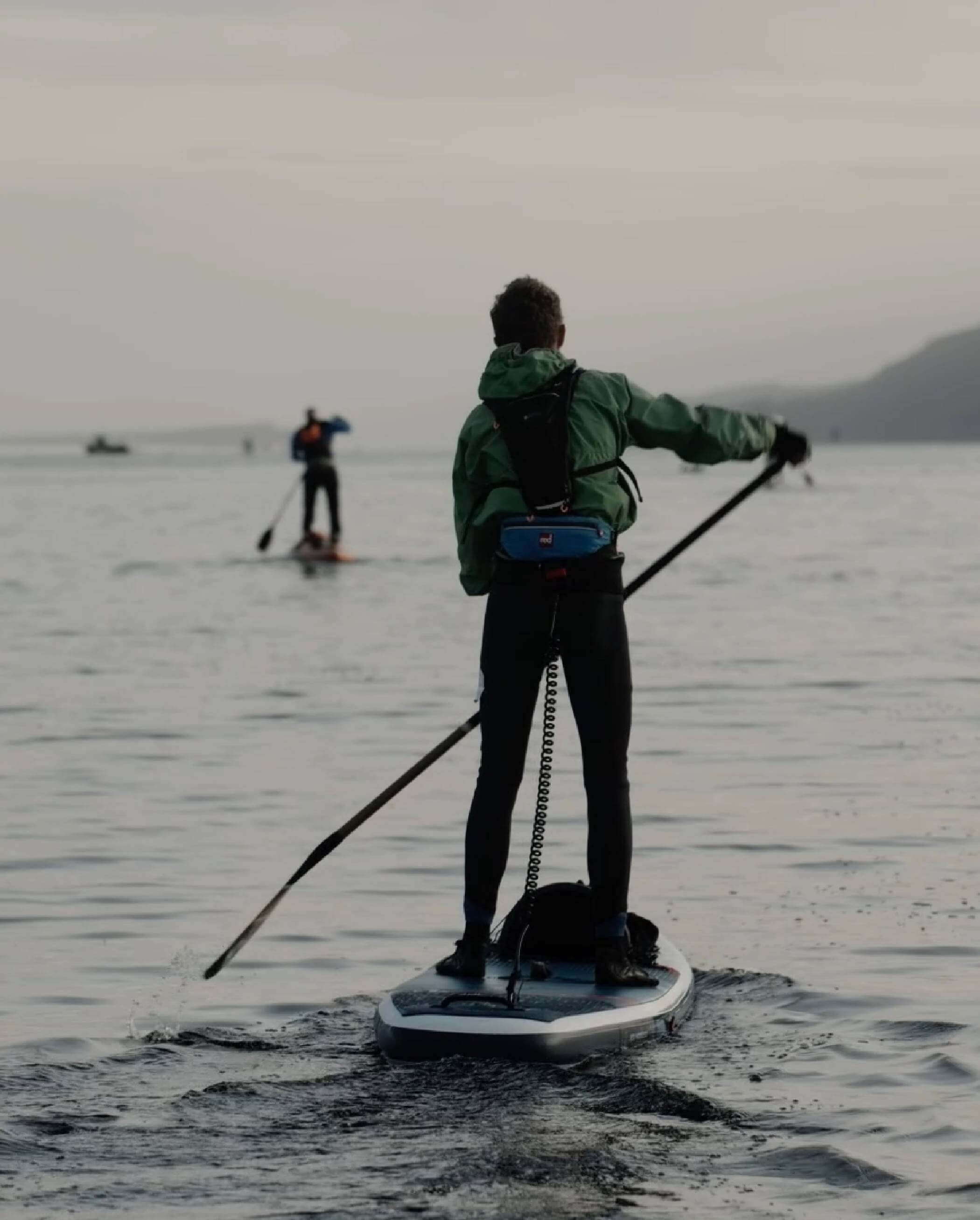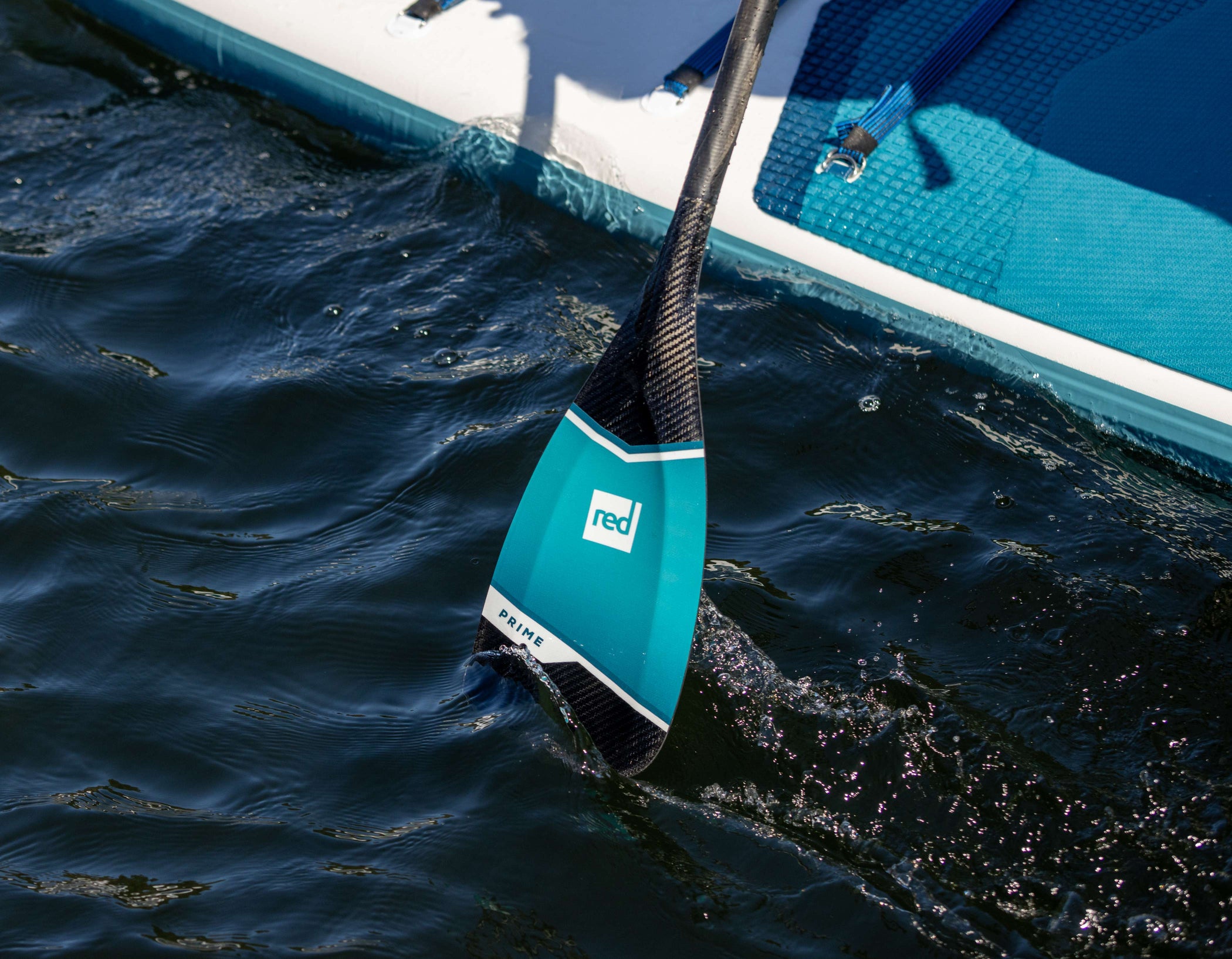
7 Practical Gift Ideas For Outdoorsy Guys
A bit stuck on what to get for a guy who loves to be outdoors this year? Check out our favourite practical gift ideas for outdoorsy guys for a little...


Written by Lydia Burdett /
Let’s assume you’re here because you love paddle boarding and are looking for a new challenge. Perhaps you’ve spent lots of time refining your paddling technique and are looking for something that will push your skills to the next level. Maybe you’ve already started to test your balance on more challenging waters or begun racking up longer distances across the weekend. The next step is something faster and more competitive, and that’s exactly where paddle boarding racing comes in.
Paddle board racing is where high-performance kit meets technical skill to create an adrenaline-fuelled battle on the water. It brings together fitness and a sense of adventure to take your SUP skills to new heights, whether that’s through close sprints or tight turns mid-race. If this sounds like something you’d like to try, you’ve come to the right place. For those ready to get into stand-up paddle board racing, this guide will help you get prepped and ready to face the start line.
If you’re already a seasoned paddler, SUP racing is a natural progression of the sport you already love. It’s obviously a great workout, demanding more from your body over long distances than you might be used to, and therefore requiring high levels of mental and physical endurance.
However, paddle board racing is also perfect for anybody who wants to embrace the community aspect of the sport. The events you’ll take part in provide the opportunity to get together with like-minded people in some especially impressive settings, all in the aid of some healthy and much-welcome competition.
One of the best things about paddle board racing is that there is a huge variety of event formats out there. You’ll never get bored or struggle to find something that will challenge you.
Most racers will start with either a sprint - a fast, intense race over a short distance - or an endurance race, typically over 5km, testing your skills over a long distance. For an even greater challenge, you could also give a more technical race a go. These types of events are usually shorter but come with the added challenge of extra turns to manoeuvre.
If you’re not sure where to start, check out our guide to the most exciting paddleboard races in the world.



Whether you already have a specific event in mind or want to get prepped before you sign up for the ultimate SUP race, paddle board racing requires a structured and purposeful approach to training. Given that you should already be very comfortable with most aspects of advanced paddling technique, training should focus more closely on the form of your race stroke and building up the stamina you’ll need on race day.
Many of the racers you’ll meet might work with coaches on set training plans. This can be a great place to start if you’re not sure what you need to work on, but we do find that, with the right levels of self-discipline, you can train effectively through the following activities:
1. Build Up Your Endurance
While not all forms of paddle board racing will require you to tackle long distances, endurance is always key. Racing distances can vary from short <500m sprints to multi-day events, and you’ll need strong aerobic and anaerobic capacity to maintain the right effort to the finish. Include a balance of long paddles and interval sessions in your training routine to give your body the chance to adapt to paddling at a consistent moderate pace and cope with shorter and higher intensity bursts of speed.
2 Drill Into Technique
Spend plenty of time really refining your race stroke. Your catch needs to be as strong as possible to start efficiently, while your core will play a critical role in priming your body for the next stroke almost straight away. Work on your cadence, too, and get used to maintaining a high rhythm so that you sustain a quicker pace when it counts.
3. Work Away From The Water
The work you do away from the water can be just as important as the work you do on it when it comes to training for paddle board racing. Not only can gym-based strength and cardio work save you time compared to on-water sessions, but they also help to build the muscles and endurance needed to complement your paddle board fitness.
Likewise, make sure to incorporate some level of flexibility and recovery into your training plan. Yoga, pilates, and regular stretching can all help your muscles become more resilient and prevent niggly injuries that could scupper your race day plans in the future.
4. Practice Race Scenarios
Building race confidence is the final piece of the puzzle once your fitness is up to scratch and technique is locked down. Simulate some race conditions and practice mock starts, close turns and sprints. If you have a particular race scheduled in, it’s also worth having some sessions in similar water conditions so that you can get used to any natural challenges you might face.



Mastering your technique and preparing your body is just one part of getting ready for paddle board racing. The right equipment also plays a hugely important role in your performance.
To get started with your training, you probably won’t need to overhaul all of your gear straight away. If you have a well-made inflatable paddle board, you can build the right foundations before fully committing to a racing paddle board setup. However, once you commit to a proper event, specialist equipment will give you a competitive edge. Race-specific kit is designed to help you move faster and more efficiently, and be the deciding factor in terms of who finishes strong and who fades halfway through the course.
The main pieces of equipment you will need to consider for paddle board racing are:
A racing paddle board is the first (and most important) upgrade you’ll need. Unlike the all-round paddle boards you might be familiar with, SUP race boards are typically longer, narrower, and streamlined to generate speed and track efficiently. They tend to feel less stable when you first try one, but once comfortable, you’ll find you can cover significantly more distance with much less effort.
Some events will have specific regulations when it comes to the racing paddle board required. In general, though, you’ll use a 12’6” or 14’0” board (your exact choice might depend on your weight, experience, and the type of racing you’re doing). We sell both, and will cover the latest Red Paddle Co race SUP range shortly.
Your paddle will also make a big difference to the efficiency of each stroke, and we’d always recommend going for something lightweight. A lightweight paddle is easier to move in and out of the water at speed, helping you to keep up the proper form we’ve already talked about and maintain a high cadence with each stroke.
That said, your paddle still needs to be tough and durable. Carbon fibre paddles like our Prime SUP paddle are great on this front, offering strength and stiffness alongside a lightweight construction that enables maximum efficiency.
Lastly, pick a blade shape that is optimised for racing. Paddles for paddle board racing will usually be smaller and narrower than a standard paddle, with easy adjustment so that you can tailor your setup to your training and race day needs.
SUP racing is all about performance, but this isn’t to say that you can neglect important safety considerations. In fact, many races will require specific equipment such as a quick-release leash and PFD (personal flotation device). You should never have the attitude that these accessories will slow you down. They are required for a reason, and racing without them could put you in some serious danger.
There are other paddle board racing accessories you might want to have to hand, too, such as a dry bag or dry pouch for your essentials. Read more about them here.
If you think you’re ready to race, look no further than the Red Paddle Co range of race SUPs. We’ve carefully refined our board range to include two elite-level inflatable racing boards, constructed to help you perform at your very best.
The 12’6” Red Paddle Co Race SUP is the ultimate racing machine for those stepping up to competitive events. It’s race-tuned in every way, with a narrow but fast construction balancing stability with pure speed.
At just 25” wide, this racing paddle board slices through the water with minimal resistance, while the square tail extends volume towards the rear and provides consistent stability during buoy turns and technical race demands. It’s also ultra-light but super stiff, thanks to an MSL 800 double-drop-stitch construction and RSS battens which keep the board rigid without the need for a nose rod.
This racing paddle board is also great for newer racers due to how user-friendly it is. Reengineered EVA rail risers allow for efficient foot steering, while a perfectly placed centre carry handle makes race day transitions seamless. Training is easy, too, with adjustable bungees and a mount for accessories.
Meanwhile, our second Red Paddle Co race SUP offers elite performance in the 14’0” race class. The 14’0” Elite MSL 800 is our fastest ever SUP and is designed to deliver maximum pace with minimum drag. It features a slender 26” profile and narrow tapered nose, resulting in great acceleration and tracking for both sprint and endurance races.
This race SUP is also built using our featherweight MSL 800 construction alongside a square tail that adds confidence-boosting stability in all conditions. It has an almost hardboard-like feel, thanks to the combination of RSS battens and a patented FFC nose rod. The hard-release Speed Tail also adds stroke efficiency, promising a ride that allows you to push limits at the start and still cross the finish line feeling strong.
We hope that this guide has given you all of the tools you need to start paddle board racing with confidence. However, if you have any questions, please do not hesitate to reach out to the Red Paddle Co team for expert advice. For now, all that’s left for us to say is good luck, train hard, and enjoy the next step on your paddleboarding adventure.
Your bag is currently empty.
Creating an account has many benefits: